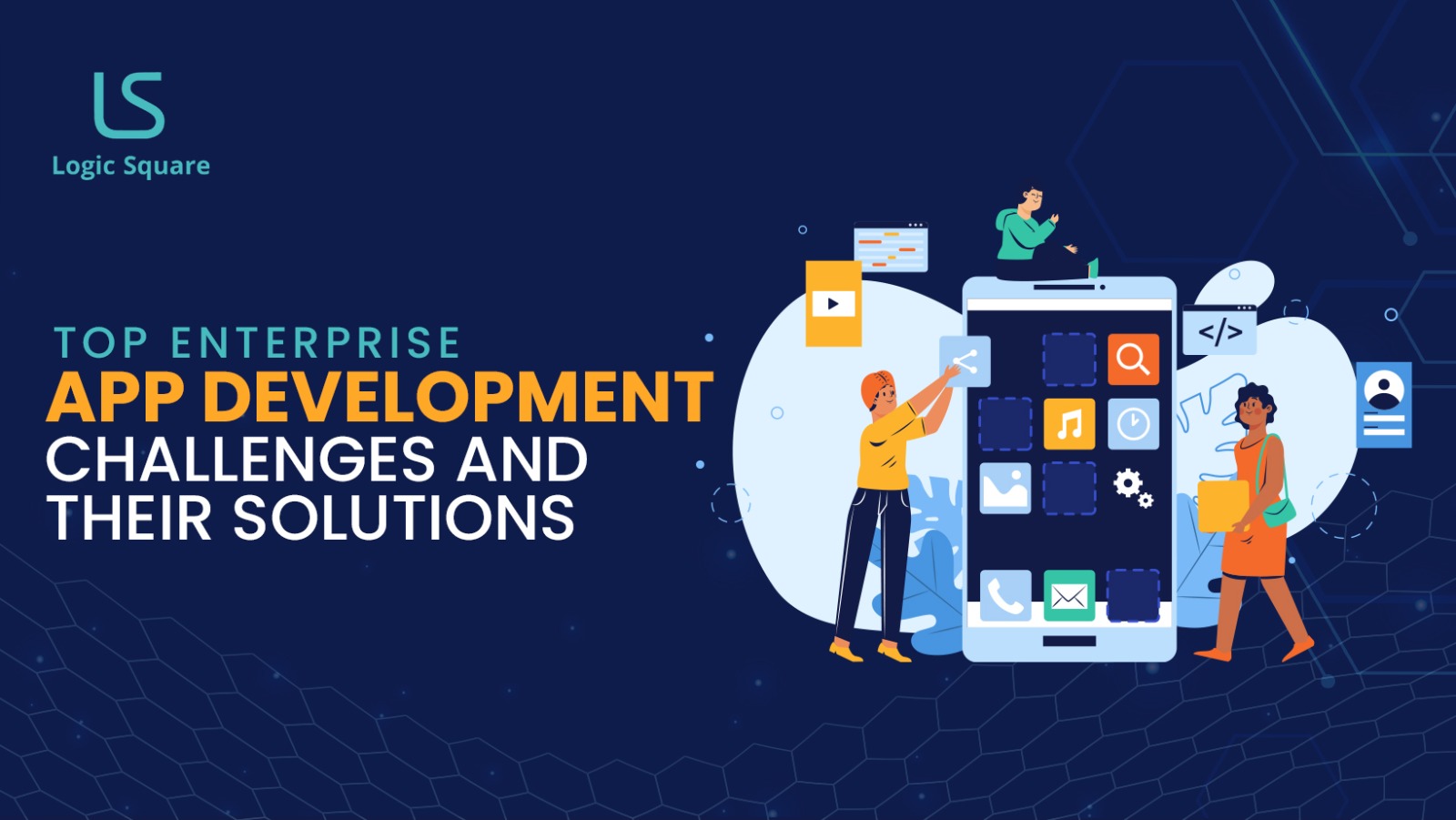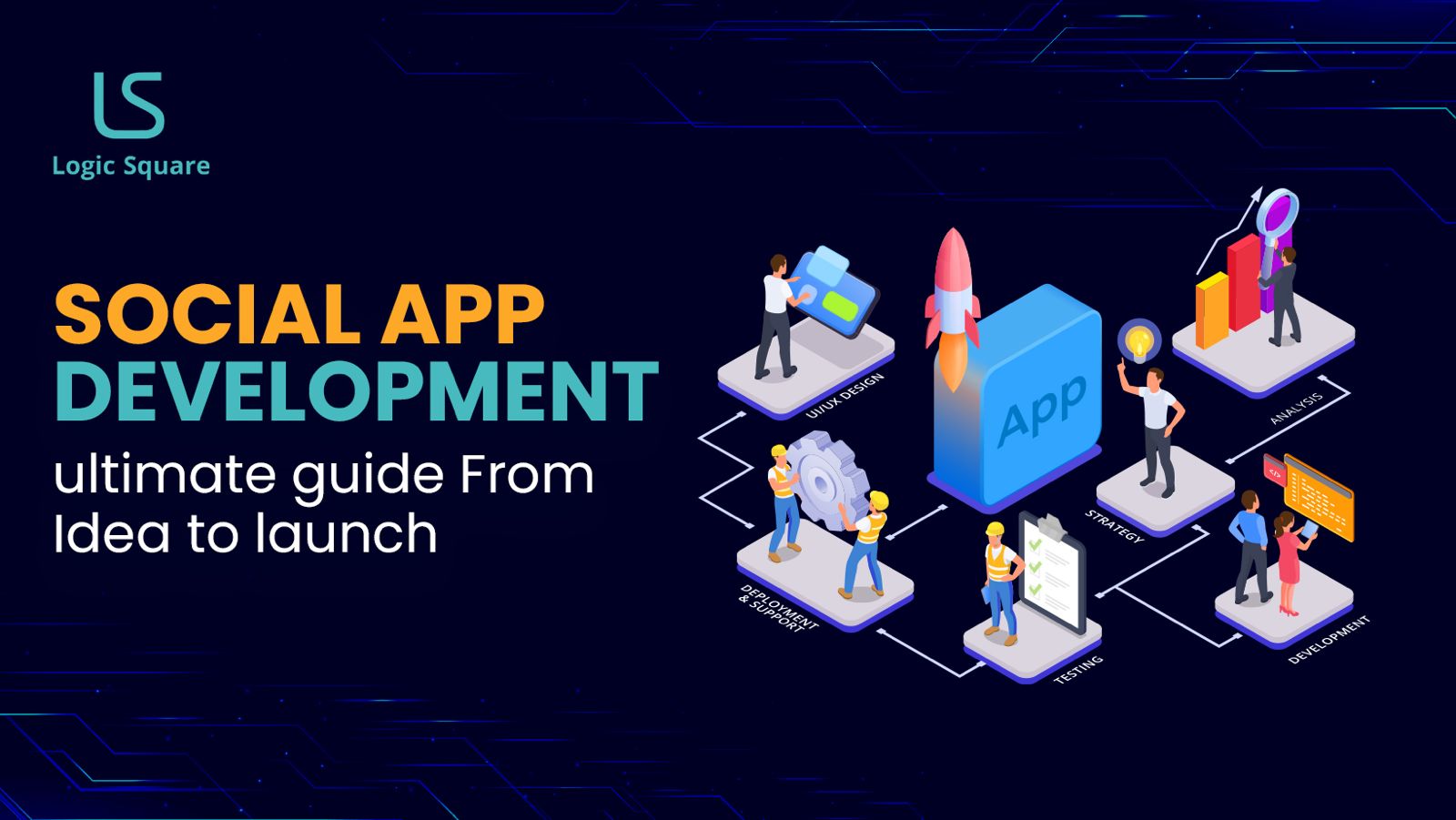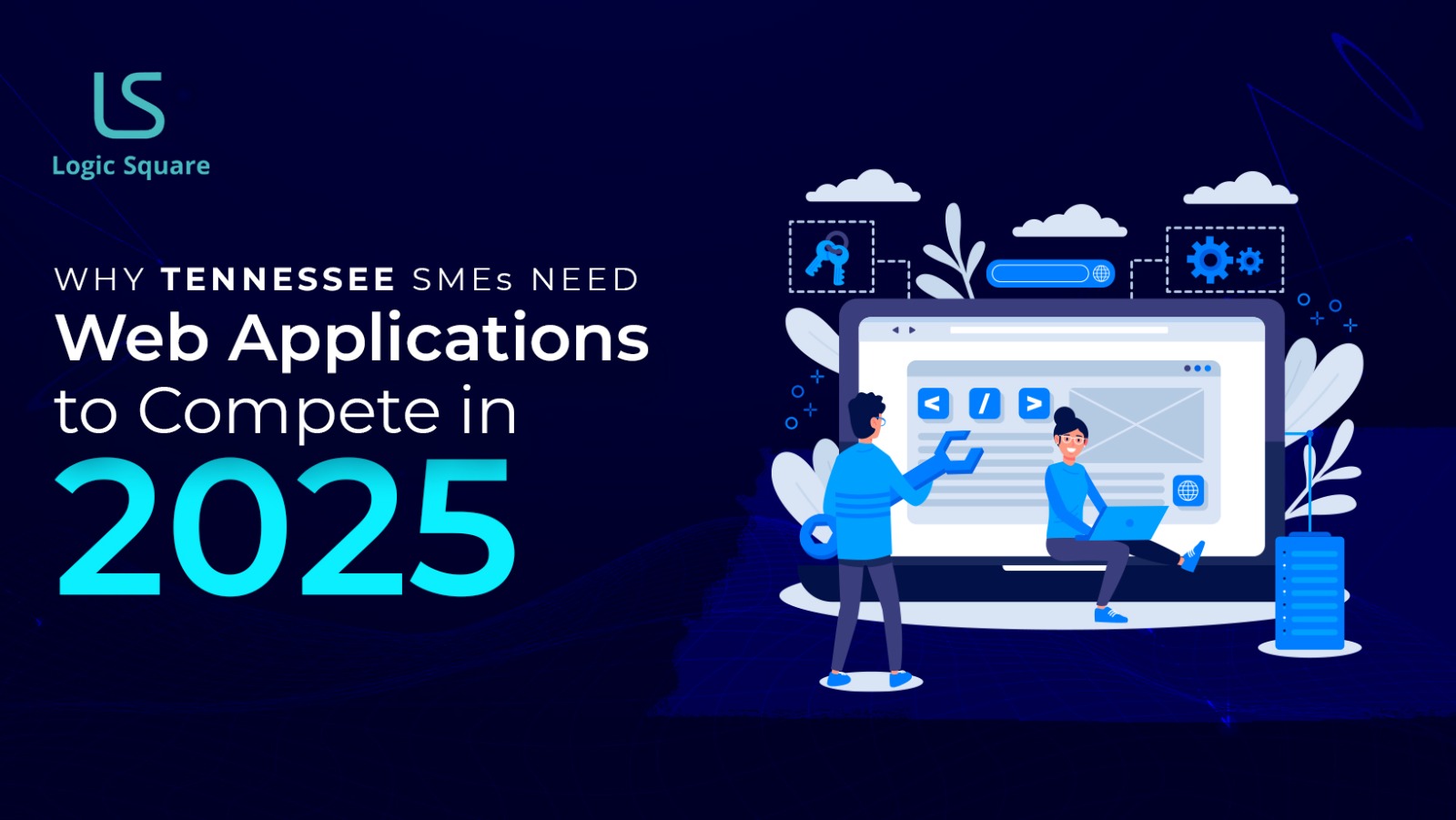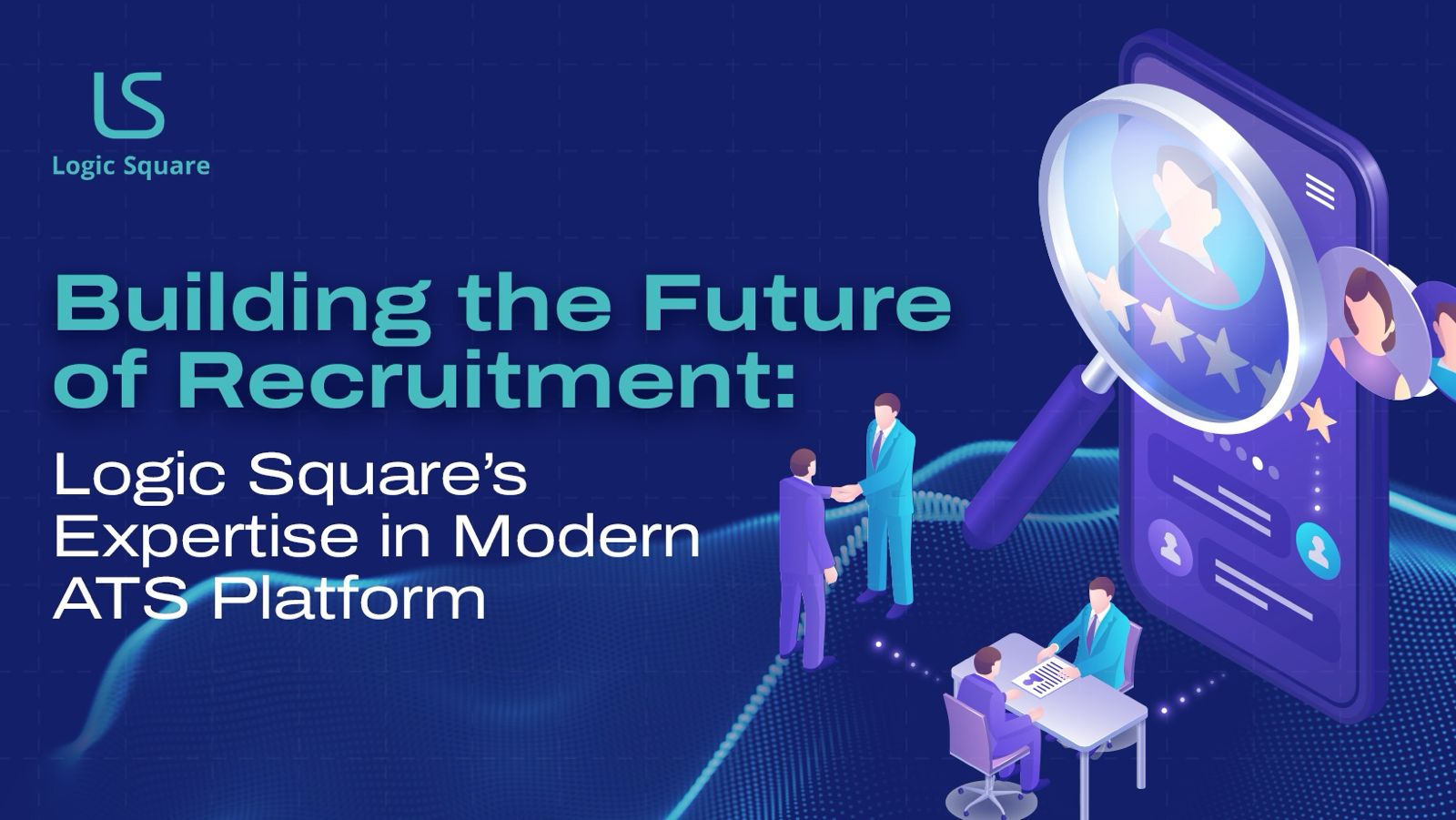The modern business environment is a hyperconnected ecosystem where enterprise app development is no longer confined to building just functional digital tools. Instead, it is looking for enterprise-grade products that can transform organizational scalability, security and intelligence.
These applications are built to be robust, scalable, and secure, often integrating with other systems to manage business processes and data across the enterprise. Examples include customer relationship management (CRM), enterprise resource planning (ERP), and supply chain management (SCM) systems.
Table of Contents
ToggleCustom enterprise software development allows businesses to create solutions tailored to their unique needs, driving efficiency and innovation. That is the reason that organizations are now focused on investing in custom enterprise software development. It helps them to streamline operations and accelerate growth.
However, the path to successful enterprise app development is often fraught with challenges. It includes dealing with complex technical hurdles to meet always-evolving business needs. With the rise of AI, machine learning, and agentic AI systems, the process has become more complex than it was earlier.
This blog post aims to go through the top enterprise app development challenges and their solutions. Let’s get started.
1. Shifting Business Requirements
One of the most persistent challenges in enterprise app development is dealing with constantly changing business requirements. Market dynamics, customer behavior, and internal strategy shifts can lead to new or altered requirements mid-project, causing delays and budget overruns.
Solution: Adopting Agile Development Methodologies
It is the most effective way to manage this challenge. Agile breaks down the project into smaller, manageable sprints, allowing for continuous feedback and adjustments.
This iterative approach ensures the final product remains aligned with evolving business goals.
2. Managing and Integrating Complex Enterprise Ecosystems
Organizational operations rely on a mix of legacy software, modern applications, cloud services, and data pipelines. A seamless integration of all these systems is crucial for organizations for a streamlined operation.
But integrating all the elements can be a tough endeavor, it’s like untangling a web of dependencies. This is important because disconnected systems often lead to data silos, inefficiencies, and bottlenecks, making real-time insights almost impossible. This complexity becomes a major barrier to scalability.
Solution: API-Driven and Modular Architecture
To overcome this, enterprise mobile app development companies are embracing modular, API-driven architectures. APIs facilitate communication between legacy and new systems, while microservices allow for easier scaling and updates.
This ensures that even large, diverse enterprise systems can evolve incrementally without complete overhauls.
3. Scalability and Performance
One of the biggest struggles in custom enterprise software development is balancing tailor-made functionality with the ability to scale. A solution perfect for one business unit may struggle when the organization expands or new processes are introduced.
Solution: Cloud-Native and Scalable Architecture
Modern enterprise mobile app development emphasizes cloud-native design. It leverages cloud platforms like AWS, Azure, or Google Cloud to scale seamlessly.
By designing with elasticity in mind, developers can ensure applications grow alongside the business without costly rebuilds. At LogicSquare, our teams focus on delivering scalable enterprise solutions that maintain flexibility for future growth while still being fine-tuned to your business needs.
4. App Security and Compliance
With the increasing sophistication of cyber threats and stringent data protection regulations like GDPR and HIPAA, ensuring the security and compliance of enterprise applications is a top priority.
Solution: Secure-by-Design and Compliance-First Development
A proactive approach is to build apps that are secure by design. This includes multi-factor authentication, encryption protocols, continuous penetration testing, and real-time monitoring for suspicious activities.
5. Adoption of Rapid Technological Change
Technology is evolving every day. Enterprises often struggle to adopt new technologies fast enough without disrupting existing operations. This challenge intensifies as AI-driven automation can autonomously make business decisions. It began to reshape how enterprise apps function.
Solution: Future-Ready, Modular Technology Stacks
By adopting a modular development approach, companies can ensure new technologies can be integrated without rewriting the entire system. Moreover, AI integration should follow a “human-in-the-loop” model, balancing automation with accountability. It is crucial for regulatory and ethical compliance.
6. Leveraging AI and Agentic AI Responsibly
The emergence of AI-powered enterprise solutions, from predictive analytics to autonomous decision-making via agentic AI, introduces both opportunities and risks. The challenge lies in ensuring AI models are explainable and reliable.
Enterprise operations are at risk because of biased algorithms, opaque decision logic, and regulatory backlash if AI regulatory usages are not managed carefully.
Solution: Explainable and Governed AI Frameworks
A robust AI governance framework ensures that machine learning and agentic AI systems operate transparently. Developers must implement explainable AI (XAI) methodologies to make model decisions understandable and auditable. Additionally, establishing an AI ethics committee or automated compliance checks can minimize bias and protect organizational integrity.
7. Keeping Pace with AI-Augmented Development
With agentic AI tools now capable of generating code, optimizing workflows, and even managing integrations autonomously, enterprise developers face a new challenge — how to effectively integrate AI agents into their development cycle without losing control or context.
Solution: AI-Enhanced Development Pipelines
The future lies in hybrid development environments, where human developers collaborate with AI agents for faster iteration and higher accuracy. Establishing strict version controls, audit trails, and testing frameworks ensures AI-generated code remains transparent and secure.
8. Resource and Skill Gaps
The rapid pace of technological change has created a significant skills gap in the IT industry. Many organizations struggle to find in-house talent with the expertise to build and maintain complex enterprise applications, especially those leveraging emerging technologies.
Solution: Partnering with a Specialized Development Partner
Organizations can address this challenge by hiring dedicated developers with the required skills and experience, either through direct recruitment, staff augmentation, or outsourcing to an enterprise app development company. While upskilling the internal team is essential for long-term success, external expertise can provide the immediate support needed to keep projects on track.
Collaborating with an app development company like LogicSquare Technologies can address the challenge by building custom scalable enterprise app solutions. With experienced cross-functional teams, businesses gain access to all services under one roof, making faster product delivery.
9. User Experience (UX) and Adoption
Even the most powerful enterprise application will fail if users don’t adopt it. A poor user experience, lack of training, or resistance to change can all hinder adoption and negatively impact the return on investment (ROI).
Solution: A User-Centric Design Approach Is Crucial.
The application should be intuitive, easy to use, and visually appealing. Involving end-users in the design and testing process can help ensure the final product meets their needs. Providing comprehensive training and support can also help overcome resistance to change and encourage adoption.
10. Data Management and Quality
Enterprise applications often need to integrate data from multiple sources and in various formats. Maintaining data accuracy, consistency, and real-time access can be a major hurdle.
Solution: Centralized Data Management and Integration
Modern enterprises are adopting data lakes and ETL pipelines to unify and clean data across systems. Leveraging AI tools for data validation can further ensure consistency and accuracy. By integrating all business data into a centralized architecture, companies can gain a single source of truth for analytics and decision-making — a critical step in achieving digital transformation for enterprises.
11. Platform Compatibility
The two major mobile operating systems, iOS and Android, have their own unique requirements. Thus, when developing an enterprise mobile app, a key challenge is ensuring compatibility across different platforms, devices, and screen sizes.
Solution: Pre-decided The Development Methodology
Development teams must decide whether to build a native app for a single platform, separate versions for each platform, or a hybrid app that works on both. The choice depends on factors like budget, timeline, and desired user experience. Cross-platform development frameworks can help create apps that run on both iOS and Android with a single codebase, but they may have limitations.
Conclusion
Enterprise application development is a complex but critical endeavor for any organization to thrive in the digital age. By understanding and proactively addressing the challenges of today and tomorrow, they can easily keep their operations running and scale when needed.
From shifting requirements and security threats to the integration of emerging technologies, businesses can create robust, scalable, and user-friendly applications that drive success.
Requirements?
A strategic approach, the right technology stack, and a skilled development team, whether in-house or from a specialized enterprise mobile app development company in the US like Logic-Square Technologies.





